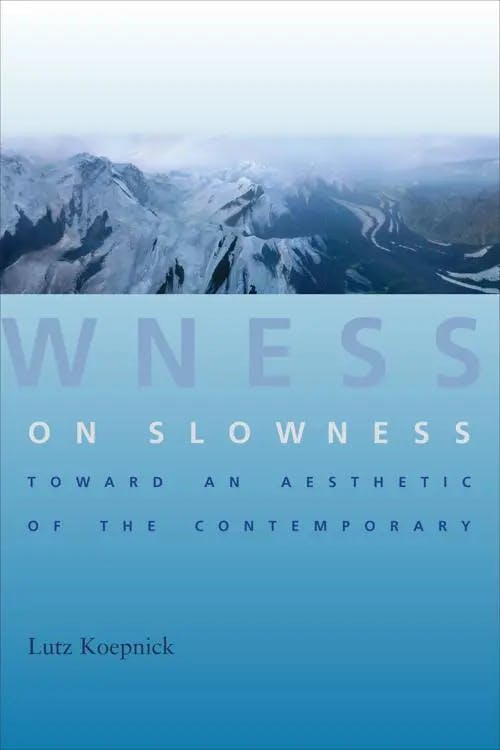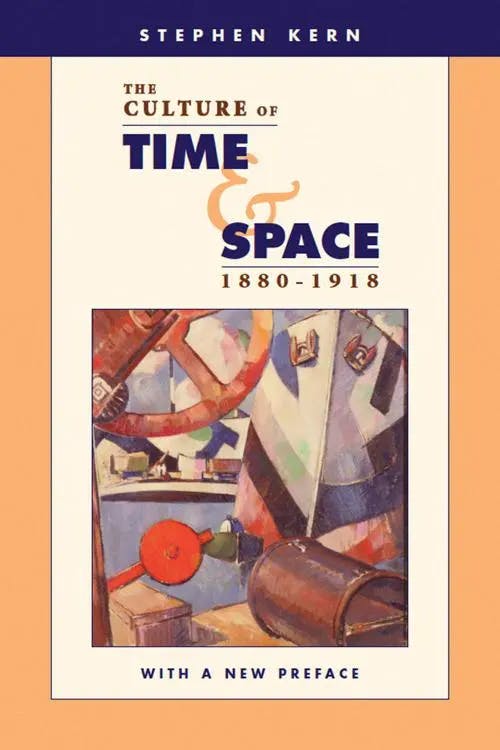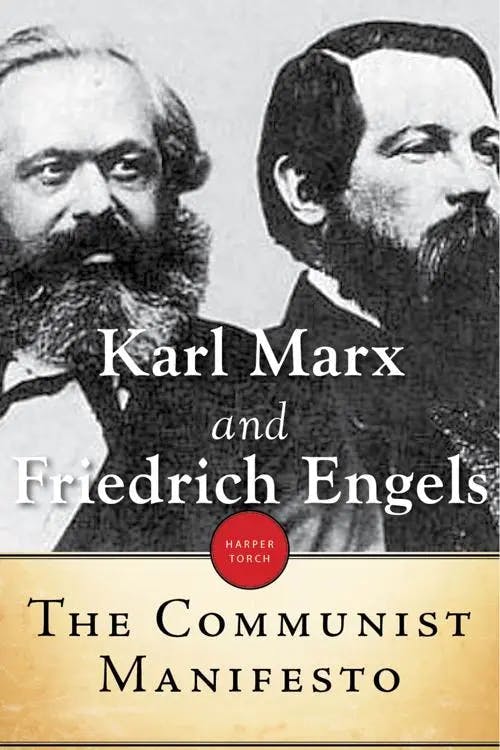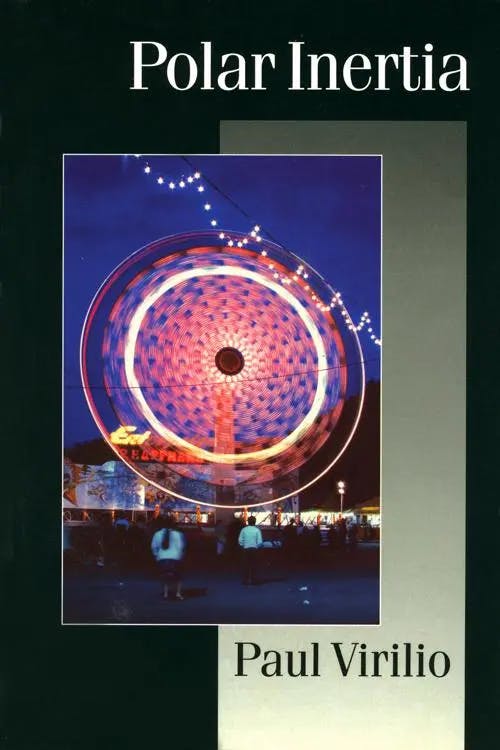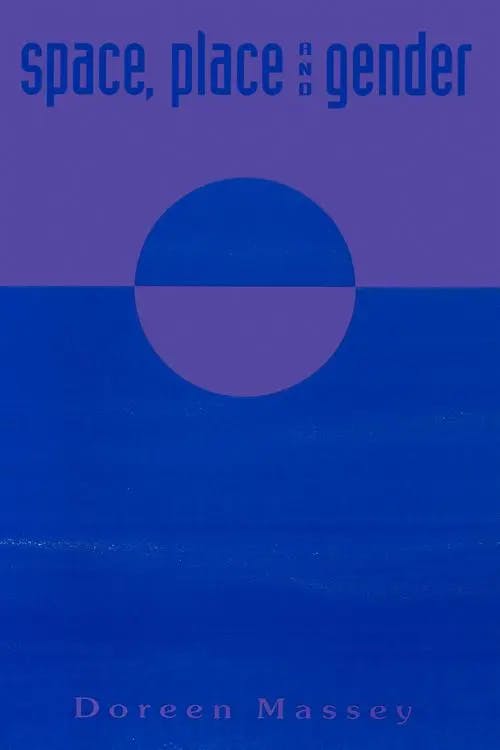What is Time-Space Compression?
PhD, English Literature (Lancaster University)
Date Published: 08.03.2023,
Last Updated: 11.01.2024
Share this article
Defining time-space compression
Time-space compression refers to capitalist expansion’s alteration of the relationship between space and time. This occurs as the result of technological innovation, driven by globalization. Examples of time-space compression include new forms of communication technology, such as email, the internet and telephones, as well as 20th/21st century travel capabilities; we are able, for example, to narrow the distance between places through rail, air travel and cars. The condensing of space and time has been driven by a capitalist need to access global markets, speed up production and increase profits.
Put simply, time-space compression describes how capitalism, and capitalist paraphernalia, has made the world smaller, reducing the time and space we operate within.
When did time-space compression start?
In TimeSpace: Geographies of Temporality (2003), Jon May and Nigel Thrift identify two periods in which time-space compression is most evident: from the mid-nineteenth century to the outbreak of the First World War and at the end of the twentieth century. As May and Thrift explain ‘both periods saw a significant acceleration in the pace of life concomitant with a dissolution or collapse of traditional spatial co-ordinates’. This overturning of traditional interpretation or experience of space was due to the major developments seen in each period in terms of transport and communication. As Lutz Koepnick affirms in his book On Slowness,
industrial modernity, as it began to sweep across the European landscapes of the nineteenth century and introduced technologies such as the steam train, the telegraph, the telephone, the cinema, and the automobile, inaugurated an age of unprecedented time-space compression. Modernity brought the thrill of speed and motion to the sluggishness of preindustrial life. (2014)
Lutz Koepnick
industrial modernity, as it began to sweep across the European landscapes of the nineteenth century and introduced technologies such as the steam train, the telegraph, the telephone, the cinema, and the automobile, inaugurated an age of unprecedented time-space compression. Modernity brought the thrill of speed and motion to the sluggishness of preindustrial life. (2014)
The end of this first period of time-space compression, the outbreak of the First World War, is analysed by Stephen Kern in The Culture of Time and Space, 1880–1918 (2003). In this work, Kern refers to the July crisis – the series of escalations between the major powers in Europe in 1914. Of this period, Kern writes that:
The present was a parenthesis of time between a glorious and prosperous European past and an uncertain future, when diplomats spoke and acted for nations under circumstances of extraordinary temporal compression. This was the climax of the age of simultaneity. Telegrams sent to half a dozen capitals triggered a variety of responses simultaneously. Telephones carried instantaneous two- and three-way conversations. (2003)
Stephen Kern
The present was a parenthesis of time between a glorious and prosperous European past and an uncertain future, when diplomats spoke and acted for nations under circumstances of extraordinary temporal compression. This was the climax of the age of simultaneity. Telegrams sent to half a dozen capitals triggered a variety of responses simultaneously. Telephones carried instantaneous two- and three-way conversations. (2003)
Kern goes on to state that, even though communication and transport resulted in simultaneity with each nation having a very similar present, they all had visions of a different future resulting in the outbreak of war.
As for the second period of time-space compression, the end of the twentieth century, Barney Warf in Time-Space Compression: Historical Geographies (2008) writes that ‘global capitalism in the late twentieth century underwent yet another sea-change with widespread economic, political, and cultural repercussions for the structure of space and time’. This latter phase is associated with the postmodern era, advancements in technology and production methods under late-stage capitalism. This, of course, has resulted in numerous social and political consequences across the globe. It is the consequences of time-space compression that is of particular interest to numerous social geographers and philosophers.
Marx, Engels & “early” time-space compression
As time-space compression is seen as occurring as a result of capitalist development and the rise of globalisation, a great deal of work on time-space compression is viewed through a Marxist lens. In fact, one of the first to acknowledge this phenomenon was Karl Marx in Grudrisse: a series of seven notebooks written by Marx between 1857 and 1858, eventually published in 1939. In this, Marx writes that:
Capital by its nature drives beyond every spatial barrier. Thus the creation of the physical conditions of exchange – of the means of communication and transport – the annihilation of space by time – becomes an extraordinary necessity for it. (1939, [1993])
Indeed, Marx and Friedrich Engels had previously alluded to time-space compression in relation to globalisation in The Communist Manifesto (1848):
The need of a constantly expanding market for its products chases the bourgeoisie over the whole surface of the globe. It must nestle everywhere, settle everywhere, establish connections everywhere… The cheap prices of commodities are the heavy artillery with which it batters down all Chinese walls, with which it forces the barbarians’ intensely obstinate hatred of foreigners to capitulate. It compels all nations, on pain of extinction, to adopt the bourgeois mode of production; it compels them to introduce what it calls civilization into their midst, i.e., to become bourgeois themselves. In one word, it creates a world after its own image. (1848 [2014])
Karl Marx, Friedrich Engels
The need of a constantly expanding market for its products chases the bourgeoisie over the whole surface of the globe. It must nestle everywhere, settle everywhere, establish connections everywhere… The cheap prices of commodities are the heavy artillery with which it batters down all Chinese walls, with which it forces the barbarians’ intensely obstinate hatred of foreigners to capitulate. It compels all nations, on pain of extinction, to adopt the bourgeois mode of production; it compels them to introduce what it calls civilization into their midst, i.e., to become bourgeois themselves. In one word, it creates a world after its own image. (1848 [2014])
Time-space compression is, therefore, essential for capitalist production. This expansion of the Western world, as Marx and Engels highlight, is not limited to economic transaction but extends to more covert forms of domination, as it establishes and upholds Western perspectives on progress and civilisation.
Western domination as a result of time-space compression can be seen today as Doreen Massey points out. In For Space (2005), Massey writes:
The turning of “geography into history, space into time” has political effects.It says that Moçambique and Nicaragua are not really different from “us”. We are not to imagine them as having their own trajectories, their own particular histories, and the potential for their own, perhaps different, futures. They are not recognised as coeval others. They are merely at an earlier stage in the one and only narrative is possible to tell. (2005)
Doreen Massey
The turning of “geography into history, space into time” has political effects.It says that Moçambique and Nicaragua are not really different from “us”. We are not to imagine them as having their own trajectories, their own particular histories, and the potential for their own, perhaps different, futures. They are not recognised as coeval others. They are merely at an earlier stage in the one and only narrative is possible to tell. (2005)
Time-space compression has thus led to such discourse regarding the futures of other countries, assuming that they are aspiring to be like countries in the West. We can see this through the use of phrases like ‘developed world’ and ‘developing world’, ‘first world’ and ‘third world’, which are based on intrinsically Western ideas of space and time.
David Harvey & time-space compression in geography
One of the main figures associated with debates on time-space compression is Marxist geographer David Harvey. He argues that technological advances have caused the world to shrink, producing a sense of temporal compression. This temporal compression has distorted our sense of time. We are, therefore, according to Harvey, in an age of simultaneity, acknowledging only the existence of the present. In The Condition of Postmodernity (1989), Harvey argues that postmodernity occurred as a result of the time-space compression. Focusing on the postmodern era, Harvey argues that time-space compression occurs due to the acceleration of transaction (via credit cards or bank transfers) combined with an acceleration of consumption.
The production of consumable images, a feature of postmodernity, is also arguably the result of time-space compression. Harvey explains how capitalist production of these images has contributed to the collapsing of time and space:
The whole world’s cuisine is now assembled in one place in almost exactly the same way that the world’s geographical complexity is nightly reduced to a series of images on a static television screen. This same phenomenon is exploited in entertainment palaces like Epcott and Disneyworld; it becomes possible, as the US commercials put it, ‘to experience the Old World for a day without actually having to go there’. (1989)
Harvey explains how, due to the advancements in technology, transport and communication, the consumer is able to ‘experience the world’s geography vicariously’ via these images (1989).
This, however, has social ramifications as the bringing together of different worlds of commodities ‘does so in such a way as to conceal almost perfectly any trace of origin, of the labour processes that produced them, or the social relations implicated in their production’ (Harvey, 1989). The focus of the consumer is turned away from production and labour to the commodity. This becomes particularly problematic when the demands of mass production (long working hours, excessive output expectations) impinge upon the wellbeing of workers. For example, it means that a consumer in the West could consume a product created in a sweatshop in India without having to consciously consider the human cost of the labour. Time-space compression allows for the customer to consume goods from all across the world almost instantaneously without really querying how this was possible.
Paul Virilio & ‘speed-space’
French cultural theorist, Paul Virilio (1932-2018) furthered discussions of time-space compression with his concept of ‘speed-space’. Virilio, in an interview, describes this ‘new other time’ as being ‘that of electronic transmission, of high-tech machines, and therefore, man is present in this sort of time, not via his physical presence, but via programming’ (2017, OnScenes). The example Virilio gives is the video recorder – we are able to manipulate time using the machine to watch something which occurred in the past. Virilio argues we live in a high-speed society characterised by rapid movement, speedy communication and accelerated production.
Virilio’s research has focused primarily on our concept of speed and space in relation to warfare and information technology. The progress of technology, Virilio argues, is evident through how warfare is conducted in relation to time, rather than space. In the past, warfare was primarily about conquering space and movement; with the progress of technology, warfare places greater value on optics. Virilio writes in War and Cinema (1989) that, ‘[m]ilitary actions take place “out of view”, with radio-electrical images substituting real time for a now failing optical vision’ (1989).
This transformation of warfare is congruent with this prioritising of the image over the real, of time over space, which Virilio sees as occurring throughout society, particularly in the digital world. In Polar Inertia (1991), he writes that:
Now everything arrives without any need to depart. The special arrival of dynamic vehicles, moving and then self-moving, has suddenly been replaced by the general arrival of images and sounds in the static vehicles of the audiovisual… Afterdistance/timetook over from space in the nineteenth century, it is now the distance/speed of electronic imagery which is the coming thing. (1991)
Paul Virilio
Now everything arrives without any need to depart. The special arrival of dynamic vehicles, moving and then self-moving, has suddenly been replaced by the general arrival of images and sounds in the static vehicles of the audiovisual… Afterdistance/timetook over from space in the nineteenth century, it is now the distance/speed of electronic imagery which is the coming thing. (1991)
This results in, Virilio argues, derealisation as it becomes difficult to tell apart the virtual world and the real. This becomes more and more evident as technology progresses as producers of digital media strive for realism. This derealisation he sees as a particular threat for the human race ‘the faster we go, the more we look ahead and lose our lateral vision. We are losing our survival advantage, a space of reality; laterality’ (The Administration of Fear, 2012, 36-37). As we travel now through virtual means or as Virilio puts it ‘extra-vehicular technologies’, we become alienated from ourselves and ‘lose the ultimate physiological reference’ (1991, 84). Rather than bringing us closer together through communication and technology, time-space compression in the twentieth and twenty-first century has led to a loss of grounding in real space and disconnected us from the present.
Criticisms of the concept
One of the major critics of existing scholarship on time-space compression is Doreen Massey. Massey calls time-space compression being seen solely as a result of capitalism as ‘insufficient’. She argues that there are other factors contributing to our experience of this phenomenon:
Among the many other things which clearly influence that experience, there are, for instance, ‘race’ and gender. The degree to which we can move between countries, or walk about the streets at night, or venture out of hotels in foreign cities, is not just influenced by ‘capital’. Survey after survey has shown how women’s mobility, for instance, is restricted – in a thousand different ways, from physical violence to being ogled at or made to feel quite simply ‘out of place’ – not by ‘capital’, but by men. (2013)
Doreen Massey
Among the many other things which clearly influence that experience, there are, for instance, ‘race’ and gender. The degree to which we can move between countries, or walk about the streets at night, or venture out of hotels in foreign cities, is not just influenced by ‘capital’. Survey after survey has shown how women’s mobility, for instance, is restricted – in a thousand different ways, from physical violence to being ogled at or made to feel quite simply ‘out of place’ – not by ‘capital’, but by men. (2013)
Alexis Litvine in ‘The annihilation of space: A bad (historical) concept’ (2022) agrees with Massey’s assessment, stating that:
the concept of spatial compression – in both its experiential and speculative versions – cannot be a proper historical category…it generally leads to misrepresenting the effects of industrial mobility on space and its representations. The main problem, which historians will hopefully regard as a death warrant for its experiential component, is that it is anachronistic and socially exclusive, but at the same time far too generic and crude a descriptor for the variety of spatial experiences. (2022)
Litvine goes on to argue that spatial compression has tended to homogenise the understanding of past experiences and argues that different groups had ‘divergent perspectives’ and that ‘their spaces did not shrink at the same rate or in the same direction, if at all’ (2022).
In ‘The new global economy: time-space compression, geopolitics, and global uneven development’, John Agnew further writes that discussions of accelerated information flow result in a belief that ‘where you are no longer matters’ (2001, 141). He goes on to explain that:
[where you are] still matters immensely. Some places are well-connected, others are not; media and advertising companies work out of some locations and cultures and not out of others. The simulations of the media are still distinguishable (for some people) from the perils and dilemmas of everyday life… The much hyped televisual world must still engage with an actual world in which most people still have very limited daily itineraries that root them to very particular places. (2001)
While time-space compression can go a long way to explaining the impact of globalisation under capitalism, it is clear that discussions of this require more nuance to express the variation in which people experience the world. In your own research and writing on time-space compression, be attendant to these criticisms of the concept; not all people/places/times were, or are, affected homogeneously by the forces of capital. Furthermore, how might new emergent technologies and economic conditions contribute and/or detract from the 19th/20th centuries period of time-space compression? This is a phenomena that is by no means “over”, but in constant flux and evolution – expanding and contracting alongside the technology which emerges around it.
Further time-space compression resources & reading on Perlego
Armitage, J. (2000) Paul Virilio. From Modernism to Hypermodernism and Beyond. Sage. Available at: https://www.perlego.com/book/863567/paul-virilio-from-modernism-to-hypermodernism-and-beyond-pdf
Harvey, D. (2019) Spaces of Global Capitalism: A Theory of Uneven Geographical Development. Verso. Available at: https://www.perlego.com/book/871910/spaces-of-global-capitalism-a-theory-of-uneven-geographical-development-pdf
Tally, R. T. (2017) The Routledge Handbook of Literature and Space. Routledge. Available at: https://www.perlego.com/book/1559046/the-routledge-handbook-of-literature-and-space-pdf
What is Time-Space Compression in simple terms?
What are some examples of Time-Space Compression?
Where did the concept of Time-Space Compression emerge from?
What has the greatest effect on Time-Space Compression?
What came first, Globalisation or Time-Space Compression?
Are Time-Space Compression and Space-Time Compression the same thing?
Bibliography
Agnew, J. (2001). The new global economy: time-space compression, geopolitics, and global uneven development. journal of world-systems research, 133-154.
Harvey, D. (1989) The Condition of Postmodernity An Enquiry into the Origins of Cultural Change. Blackwell. Available at: https://blackwells.co.uk/bookshop/product/The-Condition-of-Postmodernity-by-David-Harvey/9780631162940
Kern, S. (2003) The Culture of Time and Space, 1880–1918. Harvard University Press. Available at: https://www.perlego.com/book/2094984/the-culture-of-time-and-space-18801918-with-a-new-preface-pdf
Litvine, A. D. (2022). The annihilation of space: A bad (historical) concept. The Historical Journal, 65(4), 871-900. Available at: https://www.cambridge.org/core/journals/historical-journal/article/annihilation-of-space-a-bad-historical-concept/4F468F5C4AC58E18836E0C2EC4318DF6
Massey, D. (2005) For Space. Sage Publications. Available at: https://www.perlego.com/book/861518/for-space-pdf
Massey, D. (2003) Space, Place and Gender. Polity Press. Available at: https://www.perlego.com/book/1535683/space-place-and-gender-pdf
Marx, K. (1993 [1939]) Grundrisse. Penguin. Available at: https://www.google.co.uk/books/edition/Grundrisse/-e3HP9DzwkIC?hl=en&gbpv=1&dq=penguin+grundrisse+1993&printsec=frontcover
Marx. K and F. Engels (1848 [2014]) The Communist Manifesto. Harper Torch. Available at: https://www.perlego.com/book/602671/the-communist-manifesto-pdf
May, J and N. Thrift (2003) Timespace: Geographies of Temporality. Taylor and Francis. Available at: https://www.perlego.com/book/1618603/timespace-geographies-of-temporality-pdf
Warf, B. (2008) Time-Space Compression: Historical Geographies. Routledge. Available at: https://www.perlego.com/book/1696052/timespace-compression-historical-geographies-pdf
Virilio, P. (2012) The Administration of Fear. The MIT Press. Available at: https://mitpress.mit.edu/9781584351054/the-administration-of-fear/
Virilio, P (1991). Polar Inertia. Sage Publications. Available at: https://www.perlego.com/book/863142/polar-inertia-pdf
Virilio, P. (2017) ‘Speed-Space: Interview with Paul Virilio’ Interview by Chris Dercon. OnScenes, 6th July. Available at: https://onscenes.weebly.com/philosophy/speed-space-interview-with-paul-virilio
Virilio, P. (1989) War and Cinema: The Logistics of Perception. Verso. Available at: https://www.versobooks.com/books/416-war-and-cinema
PhD, English Literature (Lancaster University)
Sophie Raine has a PhD from Lancaster University. Her work focuses on penny dreadfuls and urban spaces. Her previous publications have been featured in VPFA (2019; 2022) and the Palgrave Handbook for Steam Age Gothic (2021) and her co-edited collection Penny Dreadfuls and the Gothic was released in 2023 with University of Wales Press.

